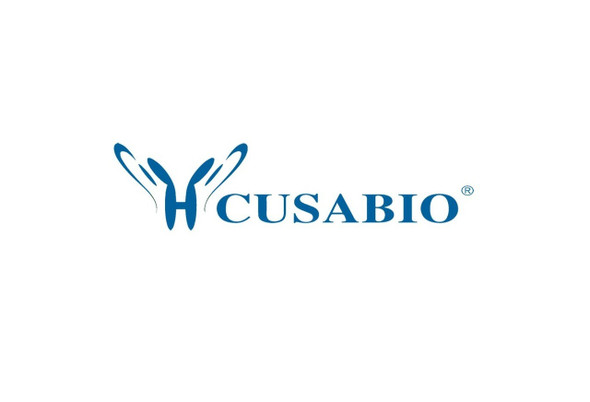Cusabio Human Recombinants
Recombinant Human Spindlin-1 (SPIN1) | CSB-EP897305HU
- SKU:
- CSB-EP897305HU
- Availability:
- 3 - 7 Working Days
Description
Recombinant Human Spindlin-1 (SPIN1) | CSB-EP897305HU | Cusabio
Alternative Name(s): Ovarian cancer-related protein Spindlin1
Gene Names: SPIN1
Research Areas: Cell Biology
Organism: Homo sapiens (Human)
AA Sequence: MKTPFGKTPGQRSRADAGHAGVSANMMKKRTSHKKHRSSVGPSKPVSQPRRNIVGCRIQHGWKEGNGPVTQWKGTVLDQVPVNPSLYLIKYDGFDCVYGLELNKDERVSALEVLPDRVATSRISDAHLADTMIGKAVEHMFETEDGSKDEWRGMVLARAPVMNTWFYITYEKDPVLYMYQLLDDYKEGDLRIMPDSNDSPPAEREPGEVVDSLVGKQVEYAKEDGSKRTGMVIHQVEAKPSVYFIKFDDDFHIYVYDLVKTS
Source: E.coli
Tag Info: N-terminal GST-tagged
Expression Region: 1-262aa
Sequence Info: Full Length
MW: 56.6 kDa
Purity: Greater than 90% as determined by SDS-PAGE.
Relevance: Chromatin reader that specifically recognizes and binds histone H3 both trimethylated at 'Lys-4' and asymmetrically dimethylated at 'Arg-8' (H3K4me3 and H3R8me2a) and acts as an activator of Wnt signaling pathway downstream of PRMT2. In case of cancer, promotes cell cancer proliferation via activation of the Wnt signaling pathway. Overexpression induces metaphase arrest and chromosomal instability. Localizes to active rDNA loci and promotes the expression of rRNA genes. May play a role in cell-cycle regulation during the transition from gamete to embryo. Involved in oocyte meiotic resumption, a process that takes place before ovulation to resume meiosis of oocytes blocked in prophase I: may act by regulating maternal transcripts to control meiotic resumption.
Reference: "Spindlin1, a novel nuclear protein with a role in the transformation of NIH3T3 cells." Gao Y., Yue W., Zhang P., Li L., Xie X., Yuan H., Chen L., Liu D., Yan F., Pei X. Biochem. Biophys. Res. Commun. 335:343-350(2005)
Storage: The shelf life is related to many factors, storage state, buffer ingredients, storage temperature and the stability of the protein itself. Generally, the shelf life of liquid form is 6 months at -20?/-80?. The shelf life of lyophilized form is 12 months at -20?/-80?.
Notes: Repeated freezing and thawing is not recommended. Store working aliquots at 4? for up to one week.
Function: Chromatin reader that specifically recognizes and binds histone H3 both trimethylated at 'Lys-4' and asymmetrically dimethylated at 'Arg-8' (H3K4me3 and H3R8me2a) and acts as an activator of Wnt signaling pathway downstream of PRMT2. In case of cancer, promotes cell cancer proliferation via activation of the Wnt signaling pathway
Involvement in disease:
Subcellular Location: Nucleus, Nucleus, nucleolus
Protein Families: SPIN/STSY family
Tissue Specificity: Highly expressed in ovarian cancer tissues.
Paythway:
Form: Liquid or Lyophilized powder
Buffer: If the delivery form is liquid, the default storage buffer is Tris/PBS-based buffer, 5%-50% glycerol. If the delivery form is lyophilized powder, the buffer before lyophilization is Tris/PBS-based buffer, 6% Trehalose, pH 8.0.
Reconstitution: We recommend that this vial be briefly centrifuged prior to opening to bring the contents to the bottom. Please reconstitute protein in deionized sterile water to a concentration of 0.1-1.0 mg/mL.We recommend to add 5-50% of glycerol (final concentration) and aliquot for long-term storage at -20?/-80?. Our default final concentration of glycerol is 50%. Customers could use it as reference.
Uniprot ID: Q9Y657
HGNC Database Link: HGNC
UniGene Database Link: UniGene
KEGG Database Link: KEGG
STRING Database Link: STRING
OMIM Database Link: OMIM









